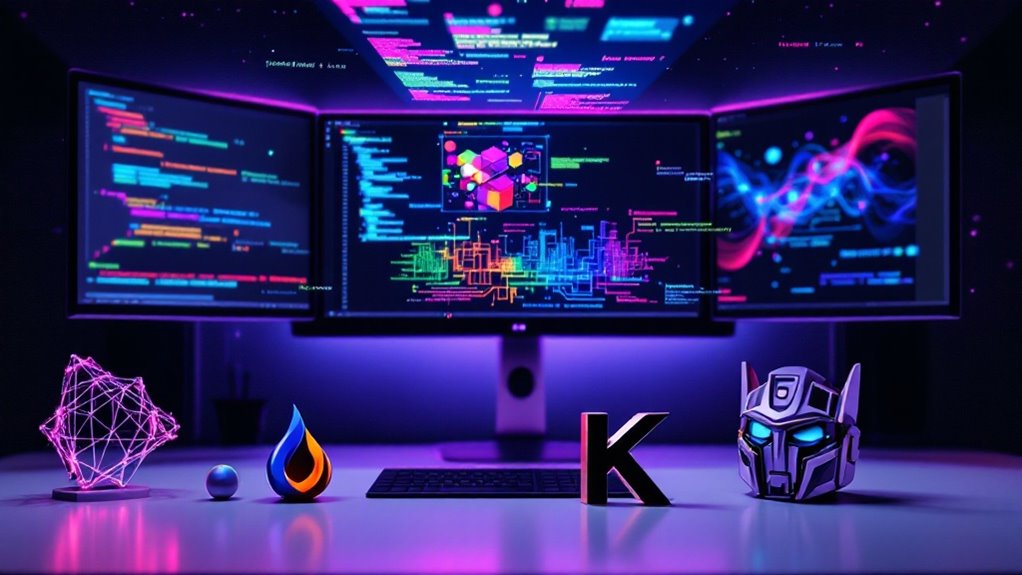Developers looking to immerse themselves in AI have several powerful options at their fingertips. TensorFlow brings Google’s industrial-strength capabilities, while PyTorch offers researchers flexibility with its dynamic computational graphs. Keras makes neural networks feel like playing with intelligent Legos, and Hugging Face democratizes NLP for the masses. Don’t forget the trusty Scikit-Learn—the Toyota Corolla of ML libraries—for when you need reliable results without the neural network drama. The right framework choice can make or break your AI journey.
TensorFlow stands tall as Google’s contribution to the AI community, handling everything from image recognition to natural language processing with impressive scalability. Sure, its earlier versions were about as user-friendly as assembling IKEA furniture blindfolded, but the integration of Keras has softened those rough edges considerably.
For production deployments at scale, TensorFlow remains the adult in the room. It excels in distributed training capabilities, allowing developers to efficiently process massive datasets across multiple devices.
Speaking of Keras, this high-level API deserves its own spotlight. It’s like the friendly neighborhood Spider-Man of neural networks—approachable, versatile, and powerful enough for most everyday heroics. Beginners love its modular design and straightforward syntax, while experienced developers appreciate how quickly they can prototype complex models without drowning in boilerplate code.
Keras: making neural networks feel less like rocket science and more like playing with particularly intelligent Legos.
PyTorch, meanwhile, has stolen the hearts of researchers everywhere with its dynamic computational graphs. Facebook’s brainchild excels at experimentation—perfect for when you need to debug your model and actually understand why your accuracy looks like a sad trombone sound.
Its intuitive debugging and flexibility have made it academia’s darling, though it’s rapidly gaining traction in industry applications too. The framework’s ability to handle various data modalities makes it exceptionally versatile for projects requiring processing of different data types. These frameworks represent the practical implementation of deep learning concepts, enabling the complex neural networks that power today’s most advanced AI systems.
When it comes to NLP tasks, Hugging Face has become practically inescapable. Their Transformers library has democratized access to state-of-the-art language models like it’s handing out free samples at Costco.
With thousands of pre-trained models available, even smaller teams can implement sophisticated language processing without training models from scratch.
For those more traditionalist developers working with structured data, Scikit-Learn remains the reliable Toyota Corolla of machine learning libraries—not flashy, but it’ll get you where you need to go with minimal fuss.
Its consistent API and thorough documentation make it ideal for classical ML tasks when you don’t need the heavyweight neural approaches.









